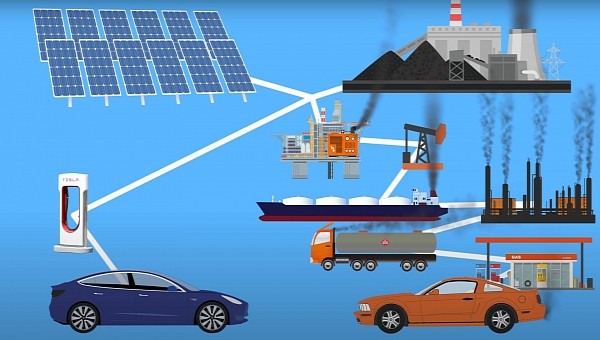One of the advantages mentioned almost constantly when people talked about EV ownership was cheap running and plugging-in costs. But in the last two years, things have changed dramatically. Electricity prices have gone through the roof while most hotels and supermarkets stopped offering free Level 1 and Level 2 charging. But here’s why you shouldn’t switch back to the internal combustion engine just yet.
Gas-powered (or, for our UK readers, petrol-powered) cars are being frowned upon by governments in most developed markets. Diesel engines are especially marginalized. Since Tesla proved battery-electric vehicles (BEVs) can serve as an alternative to burning fossil fuels, the idea to get rid of cars with exhaust systems gained traction. Now, we’re looking at a future where stopping to fill up your tank could become just a memory. Unless, of course, hydrogen-powered vehicles (known as FCEVs) manage to rise to the challenge.
But what will happen when everybody drives a car that needs electricity to run? In the last couple of years, people enthusiastically chose EVs because the math made sense – you get a car that’s more expensive than the equivalent ICE model, but you save by not having to buy petroleum products. But with rising energy costs, it’s only natural to think about the immediate future. Does it still make sense to buy an EV right now?
First off, the British pay more for electricity because – believe it or not – natural gas has gotten very expensive. Just to put things better into perspective, in 2019, the price of natural gas was around 11 times lower than today. For EV owners who rely on charging at home, this situation reflects in monthly bills. Data analyzed by Which says an annual mileage of 8,100 miles costs EV drivers between £750 ($883) and £1,150 ($1,354). These values can differ based on the type of car you own and your driving style, but what experts anticipate is a rise of at least £200 ($235) for these annual charging costs.
Despite this gloomy scenario, NimbleFins data reveals that you shouldn’t think about switching back to burning fossil fuels just to save up some cash. Their figures were based on an average mileage of 6,300 miles for gas cars and 9,400 miles for diesel vehicles. The analysis revealed a yearly fueling cost of £1,288 for gas-powered vehicles and £1,795 for diesel-powered ones. However, fuel prices remain on an uptrend, so these values could continue to grow.
In conclusion, everyone is forced to support increasing motoring costs. But, for now, using a Tesla Model 3 remains the cheaper alternative to something like a BMW 330i in the long run. If you want to pay less, then try to find the best energy offers in your area, switch more often to public transport, or/and find a company that still has lower tariffs for nighttime electricity usage. If you live in the countryside, solar panels could also become a good investment – if there’s enough sunshine in your area, of course.
But what will happen when everybody drives a car that needs electricity to run? In the last couple of years, people enthusiastically chose EVs because the math made sense – you get a car that’s more expensive than the equivalent ICE model, but you save by not having to buy petroleum products. But with rising energy costs, it’s only natural to think about the immediate future. Does it still make sense to buy an EV right now?
First off, the British pay more for electricity because – believe it or not – natural gas has gotten very expensive. Just to put things better into perspective, in 2019, the price of natural gas was around 11 times lower than today. For EV owners who rely on charging at home, this situation reflects in monthly bills. Data analyzed by Which says an annual mileage of 8,100 miles costs EV drivers between £750 ($883) and £1,150 ($1,354). These values can differ based on the type of car you own and your driving style, but what experts anticipate is a rise of at least £200 ($235) for these annual charging costs.
Despite this gloomy scenario, NimbleFins data reveals that you shouldn’t think about switching back to burning fossil fuels just to save up some cash. Their figures were based on an average mileage of 6,300 miles for gas cars and 9,400 miles for diesel vehicles. The analysis revealed a yearly fueling cost of £1,288 for gas-powered vehicles and £1,795 for diesel-powered ones. However, fuel prices remain on an uptrend, so these values could continue to grow.
In conclusion, everyone is forced to support increasing motoring costs. But, for now, using a Tesla Model 3 remains the cheaper alternative to something like a BMW 330i in the long run. If you want to pay less, then try to find the best energy offers in your area, switch more often to public transport, or/and find a company that still has lower tariffs for nighttime electricity usage. If you live in the countryside, solar panels could also become a good investment – if there’s enough sunshine in your area, of course.






